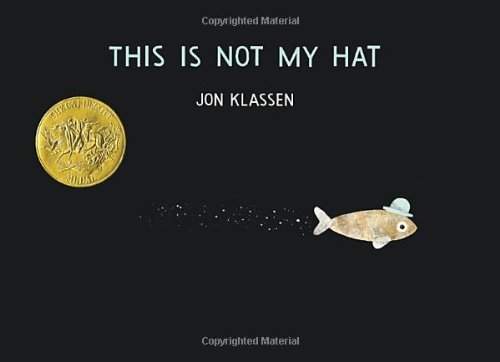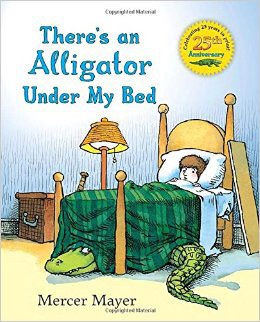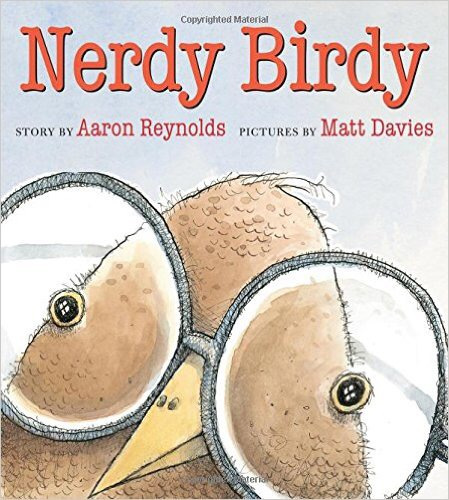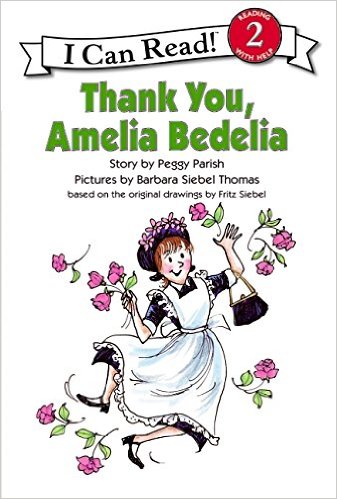Category Archives: Uncategorized
This Is Not My Hat

Jon Klassen is the author of This is Not my Hat, the Caldecott Medal Winner of 2012.
A little fish takes a hat from a whale, he knows it doesn’t belong to him but he still keeps it. He knows it’s wrong but he likes it. He swims away and tries to hide from the whale in a seaweed garden. But, he isn’t hidden for long. Whale comes to claim his hat back and that is that.
Every child needs to read this story as it deals with a topic they can all relate to, stealing. This is also a great book for educators to use in your language arts six traits lesson planning on ideas.
Just Us Women

Just us Women, written in 1982 is about Aunt Martha and her niece. They take a long road trip to North Carolina and they don’t worry about driving fast to not waste time, or not taking detours. But they do everything to make the trip long and interesting. They don’t pass up a good sale or farmers market.
They just have a good time together and don’t worry about anything.
This is a fun book to read aloud for a break time, or help children understand how to write in sequences with first, middle and last.
Sky High

Sky high was written in 2009 by Marissa Moss and illustrated by Carl Angel is a true story of Maggie Gee.
As a child she admired Amelia Earhart and also knew she was going to fly.
Maggie Gee loved to tell stores and listen to them, so it was not taken too serious by her family when she also told them she wanted to be a pilot.
When maggie was a young lady a very bad war broke out, it was WWII and they needed help. Maggie soon found out about WASP -Women Airforce Service Pilots. She knew she had to join and was soon on her way to training with her friends.
She served her many years and she earned her wings.
Maggie Gee tells her stories to her children and grandchildren and they cannot even imagine their their grandma was the only 1 of 2 Chinese American Pilots.
This is a great story to use for Social Studies.
The Book With No Pictures

B.J. Novak, star of “The Office” (American version), writes this hilarious children’s book with no pictures. That’s right, no pictures! The reader must read all of the words on each page, that’s how books work. So no matter what, the grown-up must read all of the silly words that are there. The children love to see and hear adult act silly while reading and as you can imagine, it’s a great read aloud.
Use this book to teach specifically about onomatopoeia’s and using voice in writing to convey a message and show the audience who the author is.
There’s an Alligator Under My Bed

This suspenseful story tells about a boy and an alligator. He knows there’s one under his bed, but he doesn’t know how to get him to leave. He calls his parents in to check but they don’t see anything. He is very nervous and he can’t sleep. He then gets and idea to get some food from the kitchen and trail it to the garage so the alligator will follow it and leave his room. Well, it works! He now has trapped it in the garage.
But,. . . Now his dad won’t be able to get to his car in the morning for work!!
See what happens in Mercer Meyers, “There’s and Alligator under my bed”.
Use this to teach children about using their imaginations to come up with a unique story for free writing, and use this as a prompt for younger children to tell the class how they found ________ under their bed!
Nerdy Birdy

Nerdy Birdy does not fit in. He has big glasses and compared to the other birds, he has small wings. He is also lonely and wants some birds to be friends with. Except for the cool birds don’t want to be friends with him because his interests are video games, and reading about video games. He then finds a group of other nerdy birds just like him and before he knows it he has a whole host of friends.
Nerdy Birdy meets a “gothic” vulture and while the other nerdy birds are apprehensive about befriending this vulture, nerdy Birdy takes a new step towards accepting others, even if they are different from him.
Use this to teach about diversity in your classroom and in your community. Have children write letters to those whom they wouldn’t usually think to write to, have them ask questions to get to know the person.
Goodnight Already!

Bear is a sweet friend and he lives next door to a duck. The only problem is, bear wants to sleep but duck is making it nearly impossible. All duck wants to do is, make a smoothie, and read a book, and start a rock band and…..well I think you get the idea. What is bear to do??? He has bags under his eyes and he can’t take this much longer.
Read Jory Johns’ E.B. White Read Aloud Honor award recipient, Goodnight Already! To find out if bear ever gets to sleep.
Use this to show children a story can have many details. The details make the story so it’s important to have them connect in some way. Have them see that there is a beginning, a middle and an end.
Riki – Tiki – Tavi
By Rudyard Kipling
Illustrated and Adapted by Jerry Pinkney
In this adaption of Rudyard Kipling’s Rikki Tikki Tavi a curious young mongoose is adopted by an Indian family. Throughout the story Rikki Tiikki endeavors to be a proper mongoose by protecting his family from the deadly and devious snakes lurking in a far off Indian garden. The illustrations beautifully portray the classic story. While RIkki Tikki is a touch cocky at times, he also exhibits loyalty, endurance, courage, and curiosity. Other characters, such as Mr. and Mrs. Darzee are opposites in their silliness and wisdom. This book can be used in the classroom as an introduction to the author or colonial India. I would like to use this book in my classroom to make character charts, analyzing as well as comparing and contrasting the characters traits. This book could be used well to discover theme, characterization, and cultural aspects of stories.

Thank You, Amelia Badelia
By Peggy Parish
In this colorful and witty story, Amelia Bedelia, despite the many mishaps along the way, receives a “Thank you” from the very particular Great Aunt Myra. As Amelia Bedelia goes throughout the day, she takes words literally, creating an unpredictable and humorous story for little ones. I would definitely have these stories available for at least kindergarten through second grade girls in particular. As an entire class students could discuss in groups words from the stories and other words and phrases that are highly likely to occur in Amelia Bedelia’s stories and figure out what those words mean by the context given. This book would also make a wonderful read aloud with class interactions and discussions.
